Parents rightly view Catholic schools as a partner in the education of their children. Students find a loving but challenging state-of-the-art learning environment, resulting in a superb education infused with Catholic values. Nowhere else but in Catholic schools can you get such a fusion of Catholic spirituality and academics for 7 hours a day, forming the foundation of lifelong success.
There are 14 Catholic schools – 10 elementary, 3 high schools, and 1 special learning needs schools. Over 4,100 students in grades Pre-K (3) to 12 are enrolled in our schools. The Diocese has a special learning needs school, Dreams Are Free School at Bishop Nevins Academy in Sarasota. Dreams Are Free School and St. Martha’s School are both part of the Bishop Nevins Academy. This school serves children with mild to moderate learning disabilities and those who are high-functioning aspergers.
All of the high schools are accredited by AdvancED, formerly the Southern Association of Colleges and Schools. The elementary schools are accredited by the Florida Catholic Conference. As private schools, our students are not designated for state testing. All students in grades 2 through 8 take the IOWA Tests of Basic Skills (ITBS), a nationally norm-reference test utilized by both public and private schools throughout the country. This test provides not only comprehensive accountability information, but also diagnostic information as well. The IOWA Tests provide teachers and schools with information regarding students achievement and growth. Test scores throughout the Diocese reflect the superb education that students are provided.
Administrators and teachers in our schools are state-certified and highly qualified.
The Diocese of Venice Curricular Standards are based upon, but not restricted by state standards. Where appropriate, we use the best of these standards as a foundation, but go beyond them not only by making the teaching of religion our priority, but by teaching the whole child through music, the arts, foreign language, and athletics. All of the standards within our schools are infused with Catholic teaching. The textbooks, online sources, and other materials selected appropriately reflect high expectations and Catholic values.
Our schools participate in the Florida School Choice programs. We currently have students on the McKay Scholarship, for students with special learning needs, and the Step Up For Students Scholarship (the Corporate Income-Tax Credit Scholarship), for low-income families. Families with 4-year-old children might consider Voluntary Pre-K (VPK), which is available at some Diocesan Catholic schools.
Providing a safe learning environment is inherent in the mission of our Catholic schools. School employees and volunteers are fingerprinted and trained according to the Diocesan Safe Environment Policy. Each school has a Critical Incidence Response Plan for emergencies. Safety measures are in place at all of our schools.
A peaceful learning environment is crucial for any quality education. As such, a code of conduct is in place. Schools adhere to the policies set forth in both the Diocesan School Board Policy manual and each school’s own handbook.




